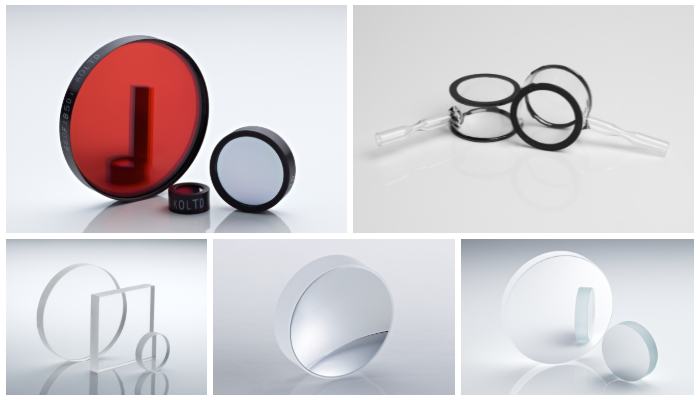How are Emissions Tested Through the use of Optical Components?
18th Jul 2019The monitoring of the gases produced by combustion is an absolutely crucial process that lives literally depend upon. Whether in an industrial setting; to comply with air emission standards or to ensure the safety of domestic fossil fuelled appliances, emission testing relies upon total accuracy.
Continuous emission monitoring systems
Continuous emission monitoring systems (CEMs) are used to monitor flue gas for carbon monoxide, carbon dioxide and oxygen, and as a combustion control measure in industrial settings. They are used in compliance monitoring for air emission standards and are highly valuable tools in the continuous collection, recording and reporting of emissions data.
CEM systems are made up of a sample probe, a filter, a sample line, a gas conditioning system, a gas calibration system and a series of gas analysers. Emissions monitored typically include carbon monoxide, carbon dioxide, oxygen, sulphur dioxide, nitrogen oxides, hydrogen chloride, airborne particulates, mercury and volatile organic. The systems are also used to measure flue gas opacity, moisture and air flow.
The gas analysers of CEMs use a range of techniques to accurately measure gas concentrations. These include non-dispersive infrared and ultraviolet adsorption; chemiluminescence and fluorescence, all of which employ optical technologies to output a signal to a data acquisition and handling system to collect and record emissions data.

Combustion gas analysers
Combustion gas analysers measure oxygen and carbon monoxide and can also calculate carbon dioxide levels. They can also measure ambient temperature and flue gas temperature which is vital in detecting whether carbon monoxide is leaking from a gas appliance, or for investigating a triggered carbon monoxide alarm.
The key features of a combustion gas analyser include a particulate filter, a condensate trap, a filter, a pump, a capillary, an antechamber, gas sensors, a thermometer and a power supply.
Originally, combustion analysers made use of catalytic sensors to measure oxygen levels. These had a limited lifespan however which meant the sensor would need replacing within one to two years. Nowadays, infrared sensors are used.
Infrared vibrational spectroscopy is a valuable tool in gas detection as it has the ability to analyse molecules by their bonds. Each chemical bond vibrates at a unique frequency, which means the vibration rate can be calibrated to the measured sample.
Most combustion gas analysers use infrared sensors to detect and measure combustion product concentration. The major benefit is that the sensor life is maximised, and the calibration cost is lowered. Extra filtering is needed however as the optical sensors are prone to being obscured by dust, and adjustments need to be made regularly due to changes in atmospheric pressure.

Optical components used in gas emissions testing
Optical components used for gas emissions testing have a crucial role to play. They are responsible for delivering results with precision accuracy and must be able to withstand the extremely harsh conditions in which gas monitoring is undertaken.
Singlet lenses and optical windows
Lens quality and robustness is a key player when it comes to emissions detection accuracy. Lenses and the other optical components that form the gas analyser are protected by optical windows. Both lenses and windows need to be crafted from the toughest materials such as calcium fluoride, germanium, silicon, fused silica, magnesium fluoride and sapphire for the ultimate in performance and longevity. The substrate material will also be determined by the particular gas being monitored.
Interference bandpass filters
Interference bandpass filters are a key component of infrared sensors, effectively detecting emissions by selecting the narrow spectral regions of various individual gases including carbon monoxide, nitric oxide, nitrogen dioxide, sulphur dioxide, hydrogen chloride and carbon dioxide, whilst rejecting other regions. Interference bandpass filters are engineered to be incredibly accurate, providing the high transmission and deep rejection required for the isolation of narrow spectral regions. Filters are available in narrow, standard, broadband and extra broadband with a customisable optical density to suit specific gases.
Infrared gas band filters
Crafted from hardwearing silicon, sapphire or germanium, infrared gas band filters are specifically designed to detect the presence of certain types of gas by blocking sidebands from visible wavelengths.
Front surface mirrors
Front surface mirrors are used for beam steering and reflecting. For harsh environments, coatings such as enhanced aluminium and protected gold will enhance performance over infrared wavelengths.
Gas cells
Gas transmission cells are used to contain gases at pressures up to 4 bar using stainless steel enclosures and magnesium fluoride windows. For gas analysis applications the choice of gas cells ranges from short path length cells for percent level concentration measurement to long path length cells for part-per-billion concentrations. Bespoke options include fixed and variable path length gas cells, and ambient temperature and heated gas cells. Optical windows designed for use alongside gas cells include sodium chloride, potassium bromide, calcium fluoride, barium fluoride, or zinc selenide infrared transmission windows, mounted in an optical spectrometer.

Custom Designed Optical Components for Gas Analysis
Knight Optical is a world-leading name in optical component design offering a range of precision optical components for gas analysis and emissions testing equipment, all of which can be customised by our optical specialists to meet the unique needs of the application and the particular gas or gases being monitored.
We provide an assured guarantee that all optical components for gas analysis and emissions testing are fully compliant with specification and comply with all regional quality and legislative standards. This guarantee comes courtesy of our ISO9001:2015 and ISO14001:2015 UKAS accreditation together with our own state-of-the-art metrology laboratory and team of dedicated quality assurance experts, all widely respected for their extensive experience and skill.
For tailored advice on optical components for gas analysis and emissions testing applications from our multilingual technical sales team please call 01622 859444 or email us at [email protected].